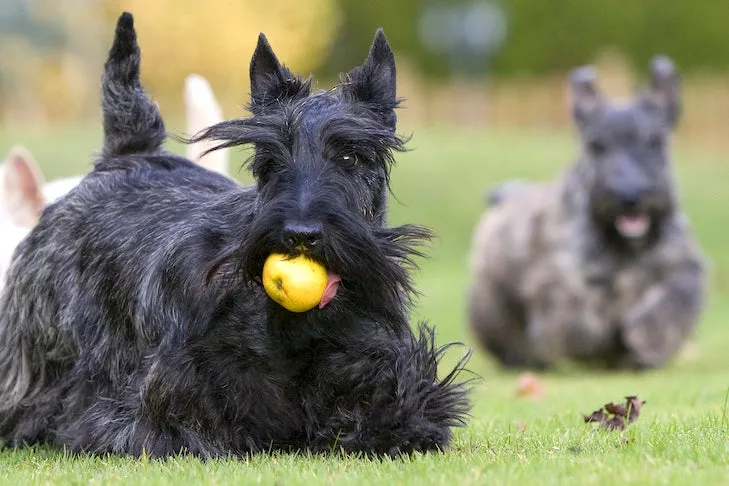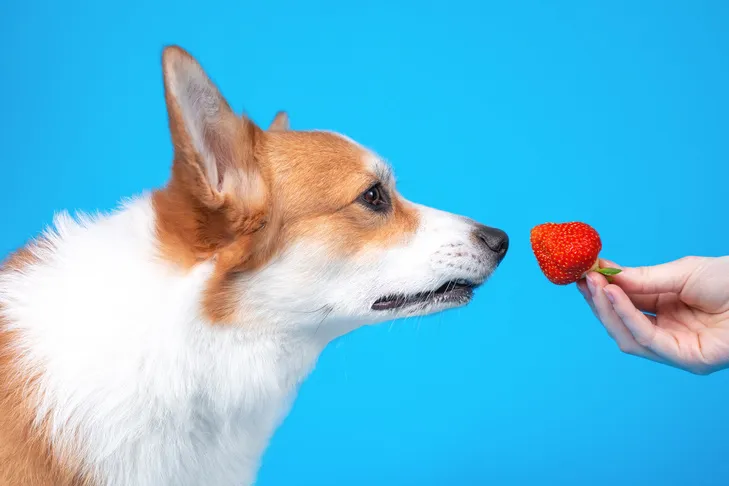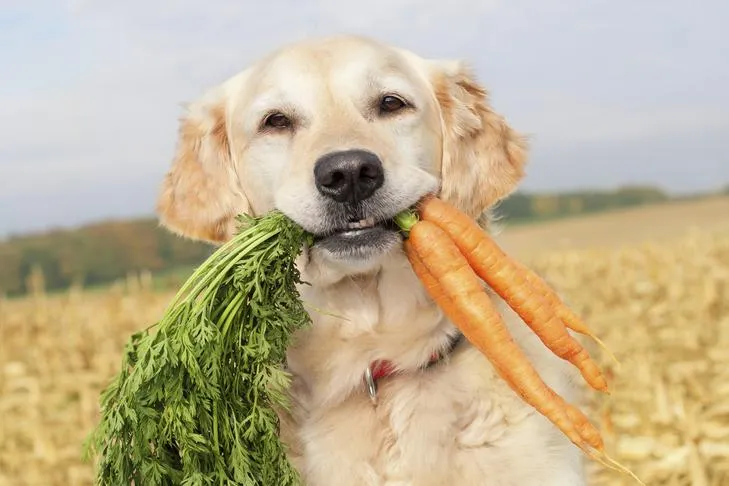As loving pet parents, it’s natural to want to share your favorite snacks with your furry companions. However, what’s healthy for humans isn’t always safe for dogs. Understanding the crucial differences in canine digestion is vital to prevent serious health issues, ranging from mild upset stomachs to life-threatening conditions. While dogs are omnivores and can benefit from certain fruits and vegetables as occasional treats, their digestive systems process foods uniquely. Knowing What Fruits Should Dogs Not Eat is just as important, if not more, than knowing which ones are safe, helping you protect your beloved pet.
Dogs metabolize various substances differently than humans, and introducing the wrong foods can lead to long-term health problems. While fruits and vegetables are not a primary dietary requirement for canines, offering appropriate, dog-safe options in moderation can provide beneficial vitamins, minerals, and antioxidants. This guide will help you navigate the world of human fruits, detailing which ones are safe for your dog in moderation and, more importantly, which should be strictly avoided to ensure their health and well-being. To learn more about other potentially harmful foods, you can refer to a comprehensive list of what dogs can’t eat.
Safe and Beneficial Fruits for Dogs (in Moderation)
Many fruits can be a delightful and healthy addition to your dog’s diet when given in appropriate portions. These provide a natural source of essential vitamins, minerals, and antioxidants that can support their overall health. Remember, moderation is key, and always prepare fruits by removing any seeds, pits, or tough skins that could pose a choking hazard or contain harmful substances.
Apples
Apples are a fantastic source of vitamins A and C, along with dietary fiber, making them an excellent snack. Their low protein and fat content also makes them ideal for senior dogs or those watching their weight. Always remove the seeds and core before serving, as apple seeds contain small amounts of cyanide. For a refreshing treat on a hot day, try freezing apple slices.
 Scottish Terriers playing in the grass.
Scottish Terriers playing in the grass.
Bananas
Rich in potassium, vitamins (especially B6 and C), biotin, fiber, and copper, bananas are a low-calorie treat for dogs. They are also low in cholesterol and sodium. However, due to their high sugar content, bananas should be given sparingly as an occasional treat rather than a regular part of your dog’s diet.
Blueberries
Often considered a superfood, blueberries are packed with antioxidants that help combat cell damage in both humans and canines. They also provide fiber and various phytochemicals. Their small size makes them perfect for training rewards or even for teaching your dog to catch treats in the air.
Cantaloupe
This hydrating fruit is full of nutrients, low in calories, and an excellent source of water and fiber. Despite these benefits, cantaloupe is high in sugar. Therefore, it should be offered in moderation, particularly to dogs who are overweight or have diabetes. Freezing small cubes of cantaloupe can create a wonderful, refreshing summer treat for enrichment.
Cranberries
Both fresh and dried cranberries are safe for dogs in small quantities. While some dogs might not enjoy their tart taste, these berries are beneficial. It’s crucial to offer unsweetened cranberries, as many dried cranberries sold for human consumption contain added sugars that dogs do not need. Overconsumption can lead to an upset stomach.
Cucumbers
Cucumbers are an excellent choice for dogs, especially those needing to manage their weight, as they contain very few carbohydrates or fats. They are primarily water, providing satiating hydration, and are rich in vitamins K, C, and B1, as well as potassium, copper, magnesium, and biotin. Chilled or frozen cucumber slices make for a great hot-weather snack.
 Russell Terrier funny portrait with cucumber slices.
Russell Terrier funny portrait with cucumber slices.
Mango
This sweet, tropical fruit is a powerhouse of vitamins A, B6, C, and E, alongside potassium, beta-carotene, and alpha-carotene. Before serving, always remove the hard pit, which contains small amounts of cyanide and poses a significant choking risk. Given mango’s high sugar content, it should be an occasional treat, particularly for dogs prone to weight gain.
Oranges
Veterinarians confirm that oranges are safe for dogs, though their strong citrus scent and taste can be off-putting to some canines. They are an excellent source of vitamin C, potassium, and fiber. If your dog enjoys them, offer small quantities of the juicy flesh, ensuring all seeds and the peel are removed. The peel can be rough on their digestive system, and its oils might irritate their sensitive noses.
Peaches
Fresh or frozen peach slices can be a good source of fiber and vitamin A. However, like cherries, peach pits contain cyanide and must be completely removed and safely discarded. Avoid canned peaches due to their high sugar syrup content, even those labeled “in natural juice.” Fresh, pitted peach flesh makes a great summer treat.
 Siberian Husky puppy being held up in front of an apple tree.
Siberian Husky puppy being held up in front of an apple tree.
Pears
Pears are a nutritious snack, high in copper, vitamins C and K, and fiber. When sharing, cut the pear into bite-sized chunks and remove the core and seeds, as the seeds also contain traces of cyanide. As with peaches, avoid canned or jarred pears with added sugary syrups.
Pineapple
Small chunks of pineapple can be a sweet and delightful treat, provided the prickly outer peel and fibrous crown are completely removed. This tropical fruit is rich in vitamins, minerals, and fiber, and contains bromelain, an enzyme that aids in protein absorption. Always choose fresh, unsweetened pineapple, as canned versions often contain excess sugars detrimental to a dog’s diet, especially those susceptible to obesity.
Pumpkin
Pure pumpkin is highly beneficial for dogs. It’s rich in antioxidants and is renowned for its ability to help relieve both diarrhea and constipation. If using canned pumpkin, ensure it is 100% pumpkin puree, not pumpkin pie filling which contains spices and added sugars. Roasting fresh pumpkin and feeding the peeled flesh is another healthy option.
Raspberries
Raspberries are safe in moderation and offer dogs beneficial antioxidants. They are low in sugar and calories but high in fiber, manganese, and vitamin C. Their anti-inflammatory properties make them particularly good for senior dogs with aging joints. However, raspberries contain small, naturally occurring amounts of xylitol, so limit your dog to no more than 8 ounces of fresh or frozen raspberries to be safe.
Strawberries
Strawberries are packed with fiber and vitamin C, and they contain an enzyme that can even help whiten your dog’s teeth. Like all fruits, they contain natural sugar, so they should be offered in moderation. Frozen strawberries can provide a fun enrichment treat for your dog.
 Pembroke Welsh Corgi sniffing at a strawberry on a blue background.
Pembroke Welsh Corgi sniffing at a strawberry on a blue background.
Watermelon
Watermelon is a hydrating treat, especially on hot days, as it’s 92% water and contains vitamins A, B-6, and C, along with potassium. It’s crucial to remove all seeds and the rind before giving it to your dog, as both can cause intestinal blockages. Freezing chunks of seeded watermelon makes for a delightful hot-weather enrichment snack.
Critical: What Fruits Should Dogs Not Eat? (Toxic and Dangerous Options)
While many fruits are healthy for humans, some contain compounds, seeds, or other parts that are dangerous, if not outright toxic, to dogs. It is paramount to understand what fruits should dogs not eat to safeguard your pet’s health. Always keep these items out of your dog’s reach and be vigilant, especially if children are present who might unknowingly share their snacks.
Avocado
Despite being a healthy fat source for humans, avocados should not be given to dogs. The pit, skin, and leaves of avocados contain persin, a toxin that can cause vomiting and diarrhea in canines. While the fleshy part of the fruit contains less persin, it can still be too much for some dogs. Furthermore, avocado flesh is high in fat, which can lead to gastrointestinal upset or contribute to serious conditions like pancreatitis if consumed in excess.
Cherries
With the exception of the fleshy fruit around the seed, all parts of the cherry plant, including the leaves, stems, and especially the pits, contain cyanide. Cyanide poisoning in dogs disrupts cellular oxygen transport, meaning their blood cells cannot get enough oxygen. If you have a cherry tree, ensure your dog doesn’t have access to fallen fruit. Symptoms of cyanide poisoning include dilated pupils, difficulty breathing, and red gums, which constitute a veterinary emergency. Always dispose of cherry pits securely in a dog-proof trash bin.
Grapes and Raisins
This is perhaps one of the most critical entries on the list of what fruits should dogs not eat. Grapes and raisins are highly toxic to dogs, regardless of breed, age, or sex. Ingestion can lead to acute sudden kidney failure, even in small quantities. If you suspect your dog has eaten grapes or raisins, contact your veterinarian immediately. Be extremely cautious with these fruits in your home, especially if you have children, and ensure they are discarded in secure, dog-proof containers. This concern also extends to any compost heaps your dog might access. To broaden your knowledge on this topic, you can also read about what fruits and vegetables should dogs not eat.
Tomatoes
While the ripened red flesh of a tomato fruit is generally considered safe for dogs, the green parts of the tomato plant—including the leaves, stems, and unripe green tomatoes—contain a toxic substance called solanine. A dog would likely need to consume a large quantity of the green plant material to become severely ill. Still, it’s safer to avoid giving tomatoes to your dog altogether. If your dog enjoys exploring your garden, prevent them from accessing tomato plants.
 Rottweiler laying down in the yard, its head tilted.
Rottweiler laying down in the yard, its head tilted.
Safe and Nutritious Vegetables for Your Canine Companion
Just like fruits, many vegetables can offer valuable nutrients and be a healthy supplement to your dog’s diet. When selecting vegetables, always ensure they are prepared plainly – without added salts, seasonings, or butter – and cut into manageable, bite-sized pieces to prevent choking.
Broccoli
Broccoli can be given to dogs in small amounts as an occasional treat. It’s rich in fiber and vitamin C and low in fat. However, broccoli florets contain isothiocyanates, which can cause mild to severe gastric irritation in some dogs. Additionally, tough broccoli stalks have been known to cause esophageal obstruction. To minimize these risks, it’s best to offer cooked broccoli.
Brussels Sprouts
Packed with nutrients and antioxidants, Brussels sprouts are beneficial for both humans and dogs. However, due to their potential to cause significant flatulence, they should be fed in strict moderation. If your dog tolerates them well, they can be a nutritious addition to their diet.
Carrots
Carrots are an excellent low-calorie snack, high in fiber and beta-carotene, which converts to vitamin A in the body. The crunchy texture of carrots also helps clean your dog’s teeth, making them a dual-purpose treat. They are a common ingredient in many commercial dog foods and treats.
 Golden Retriever holding carrots.
Golden Retriever holding carrots.
Celery
Beyond vitamins A, B, and C, celery contains nutrients that can support a healthy heart and potentially help fight cancer. An added bonus is its reputation for helping to freshen doggy breath. Celery can be a refreshing and beneficial snack for your dog.
Green Beans
Plain green beans—whether chopped, steamed, raw, or canned (no-salt-added)—are safe for dogs. They are rich in important vitamins and minerals, high in fiber, and low in calories, making them a great dietary supplement, especially for dogs needing to lose weight. Frozen green beans can also serve as enjoyable enrichment snacks.
Peas
Green peas, snow peas, sugar snap peas, and garden or English peas are generally safe for dogs. They provide several vitamins, minerals, protein, and are high in fiber. You can feed your dog fresh or frozen peas, but always avoid canned peas with added sodium.
Spinach
While dogs can technically eat spinach, it’s not the top recommendation due to its high oxalic acid content. Oxalic acid can interfere with the body’s ability to absorb calcium and, in very large quantities, could potentially lead to kidney damage. Although a dog would need to consume a substantial amount to experience adverse effects, opting for other, more beneficial vegetables might be a safer choice.
Vegetables to Strictly Avoid for Dogs
Just as with fruits, some vegetables that are perfectly safe for human consumption can be harmful or even toxic to dogs. It’s vital to understand which vegetables should never make their way into your dog’s bowl to ensure their safety. For more details on other vegetables that are dangerous for dogs, check out what vegetables can dogs not eat.
Asparagus
While not inherently toxic, asparagus offers virtually no nutritional benefit to dogs. It is too tough to be eaten raw, and by the time it’s cooked to a soft enough consistency for dogs, most of its minimal nutritional value is lost. There are many other, more beneficial vegetable options if you wish to share greens with your pet.
Mushrooms (Wild)
Wild mushrooms are a significant concern for dogs and can be highly toxic. Out of the vast number of mushroom species worldwide, a small but dangerous percentage are poisonous and can cause severe illness or even death in dogs. While store-bought, washed mushrooms are generally considered safe, the risk associated with wild varieties is too high to take chances. Always prevent your dog from foraging for mushrooms during walks or in your yard.
Onions (and related Allium plants)
Dogs should never eat onions, or any other members of the Allium family, including leeks, chives, and garlic. These plants contain compounds that are poisonous to most pets, particularly cats, but dogs are also highly susceptible. Ingesting onions can cause your dog’s red blood cells to rupture, leading to anemia, and can also result in vomiting, diarrhea, stomach pain, and nausea. Japanese breeds like Akitas and Shiba Inus are particularly sensitive, but all dogs are at risk. Always secure foods containing onions and educate household members, especially children, about not sharing them with your dog. For a broader perspective on foods humans eat that dogs cannot, consider exploring what human can dogs not eat.
Conclusion
Understanding which fruits and vegetables are safe and which are dangerous is a critical aspect of responsible pet ownership. While many fruits and vegetables can offer healthy, occasional treats, some pose significant health risks, ranging from digestive upset to life-threatening toxicity. Always prioritize your dog’s safety by removing pits, seeds, rinds, and toxic plant parts, and ensuring portion control to avoid excessive sugar or fat intake.
When in doubt about a specific food, it is always best to consult your veterinarian. They can provide tailored advice based on your dog’s individual health needs and dietary requirements. By staying informed and making responsible choices about their diet, you contribute significantly to your dog’s long and healthy life. For more detailed information on preventing your dog from consuming harmful produce, explore our guide on what fruits dogs should not eat.
